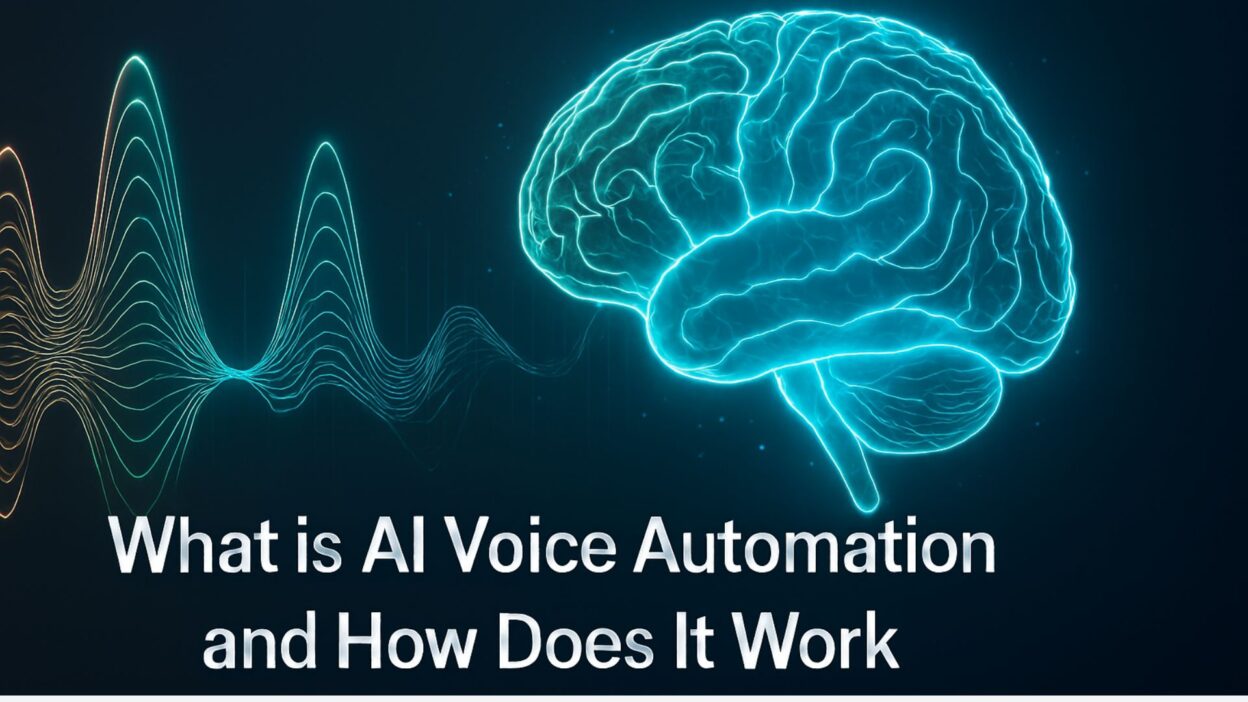TL;DR What is AI voice automation and how does it work to transform the way businesses communicate with customers. This technology enables companies to handle calls, answer questions, and provide support using intelligent voice systems that sound remarkably human.
Table of Contents
Understanding AI Voice Automation
What is AI voice automation and how does it work? Simply put, it’s a system that combines speech recognition, artificial intelligence, and voice synthesis to create natural conversations between computers and humans. These systems can understand what people say, process that information intelligently, and respond with appropriate answers.
Modern voice automation goes far beyond basic phone menus. Today’s systems can:
- Understand complex questions and requests
- Remember conversation context
- Detect emotions in a caller’s voice
- Provide personalized responses
- Handle multiple languages and accents
The Core Components
1. Automatic Speech Recognition (ASR)
The first step in understanding what is AI voice automation and how does it work involves speech recognition. ASR technology converts spoken words into text that computers can process.
Here’s how it works:
- Audio Capture: The system records the caller’s voice
- Noise Filtering: Background sounds are removed to improve clarity
- Sound Analysis: The audio is broken down into basic sound units
- Word Recognition: These sounds are converted into words and sentences
Modern ASR systems achieve over 95% accuracy across different accents and speaking styles. They can even understand industry-specific terms and adapt to individual speech patterns.
2. Natural Language Processing (NLP)
Once speech becomes text, NLP technology determines what the caller actually wants. This is crucial for understanding what is AI voice automation and how does it work effectively.
NLP performs several key functions:
- Intent Recognition: Understanding the purpose behind the call
- Information Extraction: Identifying important details like names, dates, and product references
- Context Maintenance: Remembering what was discussed earlier in the conversation
- Sentiment Analysis: Detecting if the caller is happy, frustrated, or confused
3. Dialogue Management
The dialogue manager acts as the conversation coordinator. It decides how the AI should respond based on what the caller said and what the business needs to accomplish.
Key capabilities include:
- Tracking conversation progress
- Determining the best next steps
- Handling interruptions gracefully
- Maintaining conversation goals
- Managing complex, multi-topic discussions
4. Natural Language Generation (NLG)
This component creates the actual responses that callers hear. Rather than using pre-written scripts, advanced systems generate unique, contextually appropriate answers for each situation.
NLG features include:
- Dynamic response creation
- Personalized communication
- Brand voice consistency
- Emotional intelligence integration
- Complexity adjustment based on caller needs
5. Text-to-Speech Synthesis (TTS)
The final step converts written responses into natural-sounding speech. Modern TTS technology creates voices that are virtually indistinguishable from human speakers.
Advanced TTS capabilities:
- Neural voice synthesis for natural sound
- Emotional expression and proper intonation
- Custom voice options for brand alignment
- Real-time processing with minimal delay
- Support for multiple languages and accents
How It All Works Together
To fully understand what is AI voice automation and how does it work, consider this complete process:
- Customer Calls: The system captures and prepares the audio
- Speech Recognition: Spoken words become text
- Understanding: NLP determines what the customer wants
- Decision Making: The dialogue manager chooses the best response
- Response Creation: NLG generates an appropriate answer
- Speech Output: TTS converts the response to natural speech
- Continuous Learning: The system improves from each interaction
This entire process typically takes less than 300 milliseconds, creating seamless conversations that feel natural to customers.
Real-World Applications
Businesses use voice automation for:
- Customer Support: Answering common questions and resolving issues
- Sales Calls: Qualifying leads and scheduling appointments
- Appointment Booking: Managing calendars and confirmations
- Order Processing: Taking and tracking customer orders
- Information Services: Providing account details and updates
The Technology Behind Modern Systems
When exploring what is AI voice automation and how does it work in today’s market, it’s important to understand that modern systems use:
Machine Learning: Continuous improvement from data and interactions Cloud Computing: Scalable processing power for handling multiple calls Advanced AI Models: Sophisticated algorithms that understand context and nuance Integration Capabilities: Connections with existing business systems and databases
Benefits for Businesses
Voice automation offers significant advantages:
- 24/7 Availability: Systems never sleep or take breaks
- Consistent Service: Every caller receives the same high-quality experience
- Cost Efficiency: Handling more calls with fewer human agents
- Scalability: Easily managing call volume spikes
- Data Collection: Gathering insights from every conversation
The Human-AI Partnership
Understanding what is AI voice automation and how does it work in practice reveals that the best systems complement rather than replace human agents. AI handles routine tasks efficiently, while humans manage complex situations requiring empathy and creative problem-solving.
This collaboration creates optimal results:
- AI manages high-volume, repetitive inquiries
- Human agents focus on complex, high-value interactions
- Seamless handoffs when human intervention is needed
- Real-time AI assistance to help human agents
- Continuous learning from human expertise
Future Developments
The evolution of voice automation continues with exciting developments:
Enhanced Emotional Intelligence: Better understanding and response to customer emotions
Multimodal Integration: Combining voice with visual and gesture inputs Improved Personalization: Systems that adapt to individual preferences Advanced Context Understanding: Maintaining conversation memory across multiple interactions
Edge Computing: Faster processing and enhanced privacy through local computing
Choosing the Right Solution
When evaluating voice automation options, consider:
- Accuracy rates across different accents and languages
- Integration capabilities with existing systems
- Customization options for brand voice and personality
- Scalability to handle growth
- Analytics and reporting features
- Support and training resources
Getting Started
Implementing voice automation begins with:
- Assessing Current Needs: Identifying which tasks are best suited for automation
- Defining Goals: Establishing clear objectives for the system
- Selecting Technology: Choosing platforms that meet specific requirements
- Training and Setup: Configuring the system for optimal performance
- Testing and Optimization: Continuously improving based on real-world use
Read More: How AI Voice Call Agents Are Streamlining Customer Support
Conclusion

What is AI voice automation and how does it work? It’s a sophisticated technology that combines multiple AI components to create natural, intelligent conversations between businesses and customers. By understanding speech, processing language, managing dialogue, generating responses, and synthesizing natural speech, these systems provide efficient, scalable customer communication solutions.
The key to success lies in choosing the right technology partner and implementing systems that complement human capabilities while delivering exceptional customer experiences. As the technology continues to evolve, businesses that embrace voice automation will be better positioned to meet growing customer expectations for immediate, personalized service.
Modern voice automation represents the future of business communication, offering opportunities to improve efficiency, reduce costs, and enhance customer satisfaction through intelligent, always-available voice interactions.





